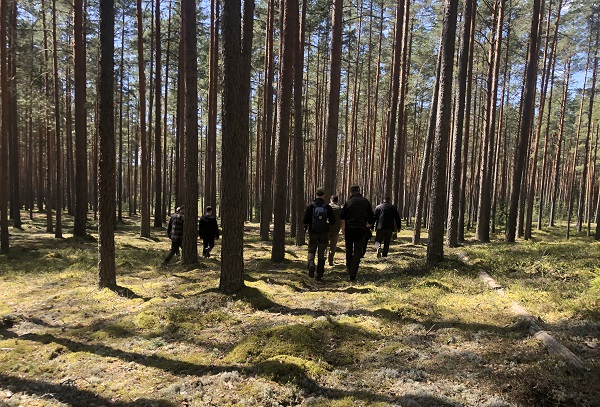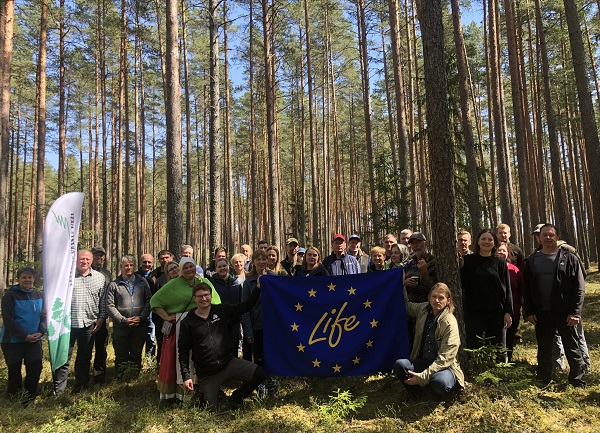Experts Assess the Biotechnical Measures Implemented 30 Years Ago for the Management of Lichen-rich Pine Forests
Develop and test innovative methods for the management of pine forests rich in lichens – this is one of the goals of the LIFE-IP “LatViaNature” project implemented by JSC “Latvia's State Forests” (LVM). LVM and SIA “Rīgas meži” and other industry professionals met at the experience exchange seminar to evaluate the biotechnical measures once implemented in the territory of the Forest Research Station in Mežole and to transfer the valuable part of the experience to today's solutions. A number of scientific findings were also presented at the seminar.
The Mežole Project was implemented in the forests around Smiltene 30 years ago. During a period of three years, 24 demonstration facilities were created, where innovative forest management techniques were tested at that time. With the regaining of independence, completely different and until then unavailable information about how to manage forests sustainably reached Latvia from the forest managers in Scandinavia and Canada.
“The Mežoles Project, which was launched back in 1995, brought new gusts of wind to the Latvian forest industry – there was more talk about natural forest regeneration, leaving structures in the forest, selective felling in spruce stands, and forest management. Young biologists were attracted. In today's forestry practice, these are self-evident things, but throughout the Soviet era, even one tree or a group of trees left in a clearing was considered a violation. As you know, we currently leave 10 ecological trees per hectare in Latvia's State forests, which is twice as much as stipulated in the regulatory acts, and we indicate in the information systems the natural values that must be specially preserved in the managed area, but at that time all this was new. It was the Mežole Project that facilitated changes in the regulatory acts regarding the preservation of biological diversity,” says Gunta Dudele, Head of Forest Management Planning in LVM East Vidzeme Region, also one of the participants of the Mežole Project.
The scientific forests of Mežole were chosen as the place for the experience exchange seminar because the goal of their creation 30 years ago was similar to the goal of today's LIFE-IP “LatViaNature” project, and due to a sufficiently long period of time, it is possible to assess what results the solutions of that time brought.
After 30 years, evaluating the three demonstration areas of the Mežole Project, it can be concluded that the natural regeneration of the pine forest has been successful, as evidenced by the different heights of the trees in the forest stand. The method of natural regeneration chosen at the time, leaving 40 testicle trees per hectare, of which 10 ecological trees were left five years later, was also suitable. One of the boldest decisions of that time was to leave the birches in clearings – this caused great discussions and concerns that the birches could take over the stand. However, judging the stand after 30 years, it can be seen that they did not interfere and did spread seeds more than in other conditions, when their seeds fly from elsewhere. On the contrary, over time they have become dead stumps and especially valuable habitats.
The insights and discussions gained during the seminar will be valuable for transferring to today's forestry solutions, including the pilot territories of the LVM forest of the LIFE-IP “LatViaNature” project in the vicinity of Engure, Mount Grebļa kalns, Zvirgzde and Ziemkelgauja. In general, within the framework of the “LIFE-IP LatViaNature” project, LVM is planning habitat restoration works in three specially protected Natura2000 territories: in the “Engures ezers” nature park, in the nature reserve “Grebļu kalns”, in the protected landscape area “Ziemeļgauja” and in the inland dune of Zvirgzde with a total area of approximately 100 hectares.





